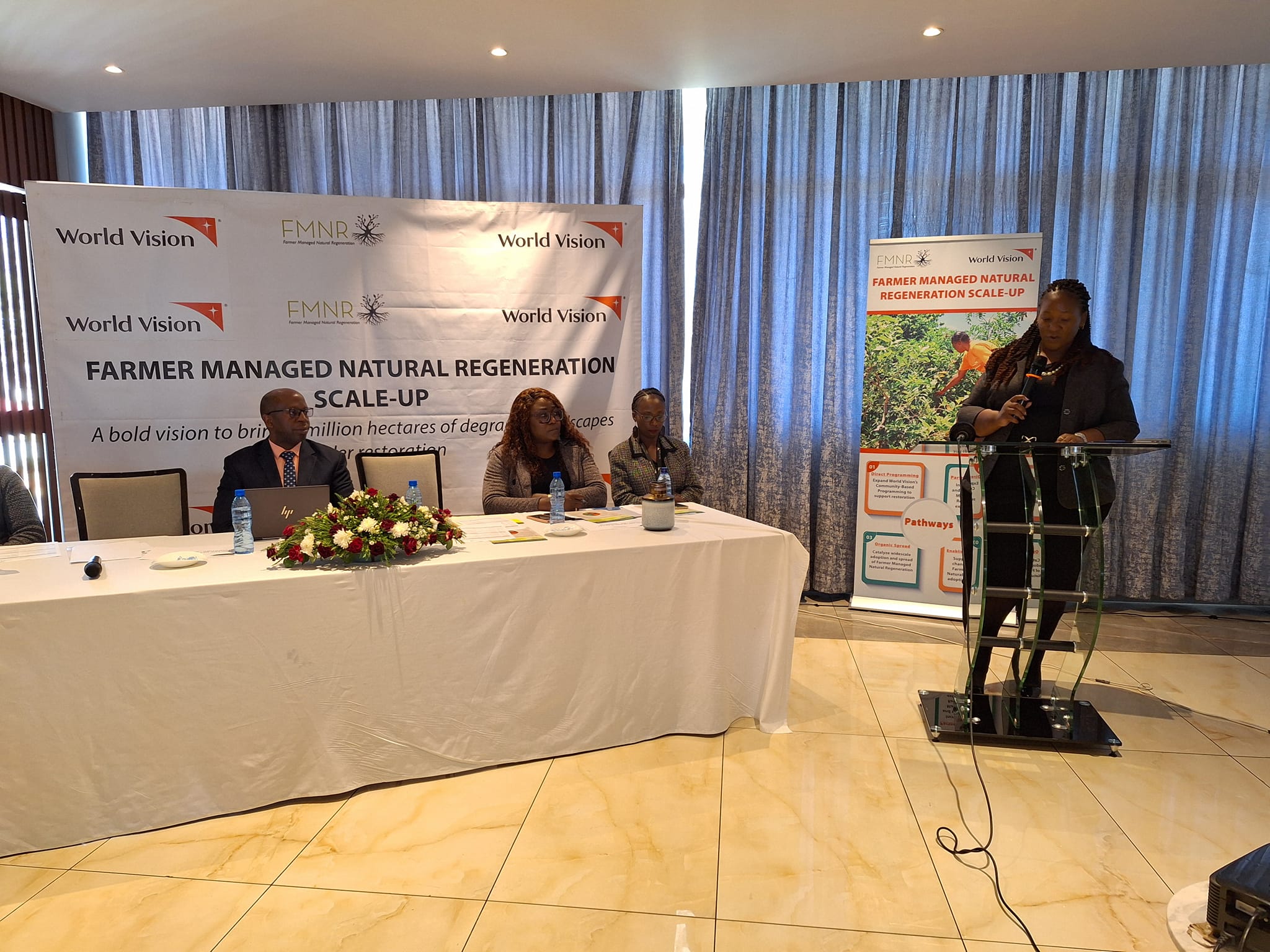
By Jeff Kapembwa
Climate change has adversely devastated the world’s environment in recent years, having degraded an estimated 100 million hectare of land over the years, needing global refacing and Zambia has taken the challenge to overcome the depreciation.
Arguably, Zambia, in collaboration with the World Vision have joined hands to fight against the climatic change impact and fight against deforestation through a US$50 million-10-year-2023-33 Farmer Managed Natural Region (FMNR) Business Plan blueprint in collaboration with the World Vision (Z) with support from World Vision Australia, covering 2 million hectares.
Under the 10-year-FMNR-strategic plan, it is envisioned a total 2 million hectares of degraded land and deforested landscapes across the country will be restored as part of the Government’s sustainable land management and further restore the livelihoods of much affected rural communities.
The Government will during collaboration with the World Vision seek to reverse the gravity of deforestation and land degradation in Zambia.
The World Vision and the Government seek to apply such conservation efforts to assist rural communities heavily reliant on forests and non-timber forest products for their livelihood and their survival which needs restoration as part of the global effort to restore one billion hectares of degraded land through scaling up MMNR.
Minister of Green Economy and Environment Collins Nzovu commended the World Vision for their commitment to restore about 2 million hectares of affected landscapes under a 10-year-strategic plan, an initiative that the Government has sought to address over the years.
Arguably, the minister in welcoming the expected regenerating of about 2 million hectares of degraded land across Zambia, with 52% of participants being women and girls, and 48% being men and boys commended World Vision for its initiative and hopes it will benefit Zambia.
Under the planned programme of restoration, World Vision plans to directly restore 600,000 hectares of degraded land while various partners are expected to undertake 1,400 million hectares of land through scaling FMNR.
Zambia, he disclosed, has one of the highest deforestation rates in the world, estimated at around 172,000 hectares annually. About one-sixth of the rural population depends heavily on forests and non-forest resources for their livelihoods.
This will contribute approximately 26% to rural household incomes, a call for safeguarding land and forestry against degradation spurred by various headwinds which need to be redressed.
“Fuel production, clearance of forests for agriculture, and mining have resulted in high rates of deforestation and increased greenhouse gas emissions. Therefore, degradation must be reversed at all costs.”
The 2023-33 business-plan, minister Nzovu acknowledges, will invariably assist Zambian communities in adopting a positive mindset to preserve land and eliminate destructive habits.
The involvement of many partners, the Government envisions, will yield greater results, as each partner brings different expertise and abilities in forest and land restoration.
Minister Nzovu said the Ministries of Agriculture and Green Economy and Environment have collaborated in educating farmers to adopt climate-smart farming methodologies intended to preserve land and forests and the results are positive.
David Phiri, the World Vision-FMNR scaling lead in Zambia says the US$50 million business plan of which 30 million is for direct FMNR) seeks to regenerate minimum 600,000 hectares directly through World Vision’s own programming and regenerate 1, 400, 000 hectares indirectly through champions, partners and organic spread.
The plan will internally mobilise resources by supporting among others, offices, program integration, donor engagements and undertake resources through bilateral / multilateral donors for support, reach private institutions & Individuals to be achieved through developing a donor engagement plan.
World Vision Zambia seeks to, within the 10-year plan, identify and respond to systematic barriers and opportunities to the adoption and spread of FMNR.
Several targets and tactics to be employed in support of scaling FMNR are many and shall be done at different levels working with like-minded partners.
FMNR has various innovative and impactful advantages towards environmental conservation which have been applied in various parts of the world, it being a low-cost, sustainable land restoration technique that harnesses the power of nature to
regenerate degraded landscapes.
FMNR benefits are multifaceted and by selectively pruning and managing the growth of trees and shrubs, farmers can restore fertility to the soil, increase biodiversity, and improve crop yields.
Environmentally, it enhances soil health, reduces erosion, and increases resilience to climate change. Economically, it boosts agricultural productivity and provides additional sources of income through the sale of tree products such as firewood, fodder, and fruits. Socially.
FMNR involves communities directly in the regeneration process, fostering a sense of ownership and stewardship over their natural resources as a direct benefit. FMNR helps in bridging the gap between scientific knowledge and practical application, ensuring that communities are equipped with the skills and resources needed to implement this technique effectively.
Zambia is contributing to a number of frameworks such as AFRI 100 to rehabilitate 100 million hectares of degraded land in Africa.
Zambia aims to achieve Land Degradation Neutrality (LDN) and restore an additional 5% of national forest cover by 2030.
The country’s National Action Plan is to contribute to:
• Restore (passive and active) and, protect 11 412 789 ha of degraded land and forested land;
• O. 2 million ha for deforested and degraded landscape o 6 million ha of forest is set under forest community management. o 1 027 000 ha of forest area regenerated with indigenous species using Assisted Natural Regeneration (ANR) and promoting enrichment planting to conserve forest biodiversity.
• 0 2 392 789 ha of forest managed under fire management (controlled burning with specified area prescribed for burning)
• Contribute to the Country’s Nationally Determined Contribution (NDC) of reducing GHG emissions by 25% through the restoration and protection of 9 million ha cited above. The quantity of CO2 sequestrated will be determined later.
• Improve livelihoods of 2,000,000 forest-dependent people. The contribution will be reached through nine outcomes from the SADC GGW Strategy which are still relevant for Zambia Country.
